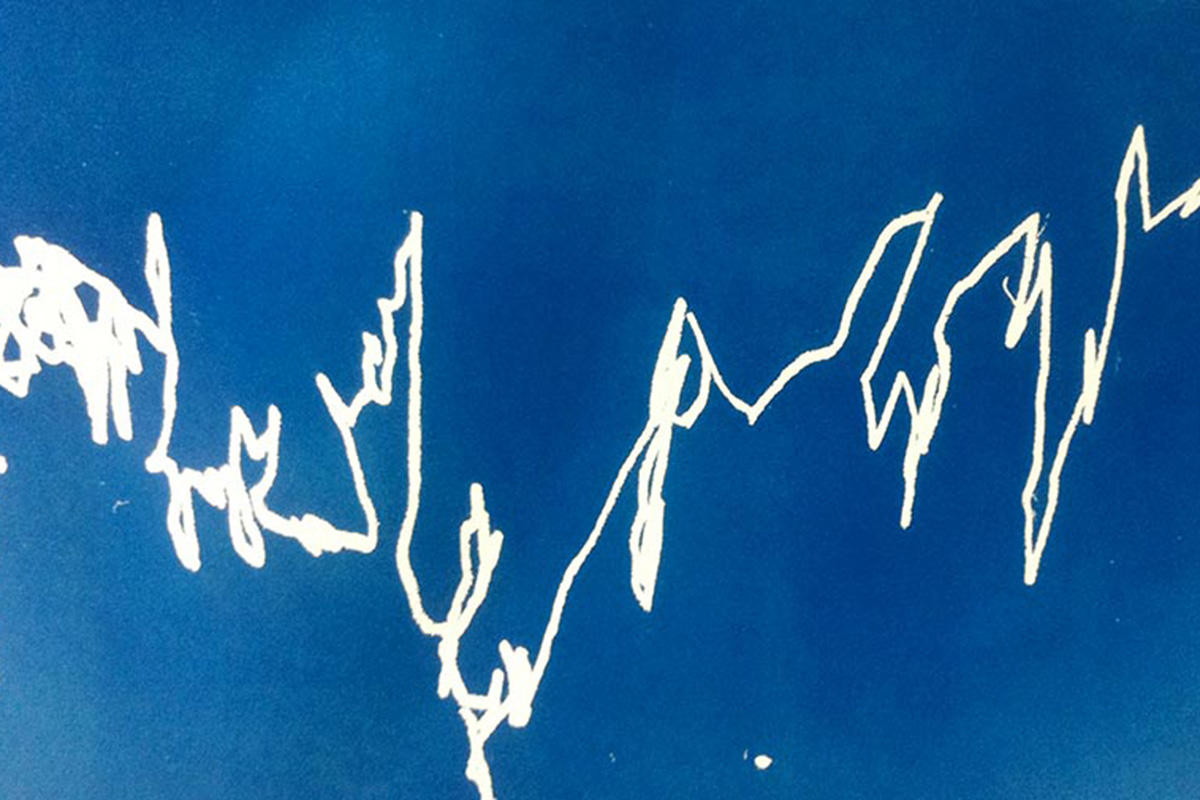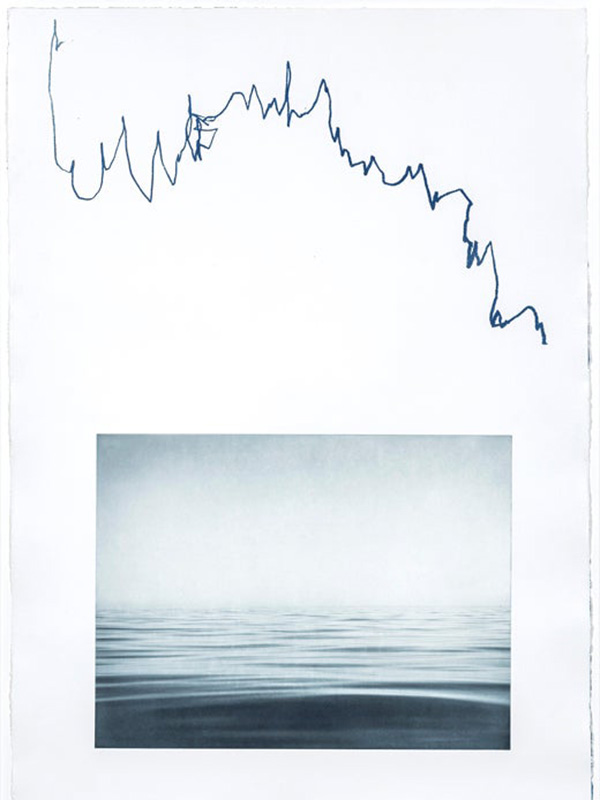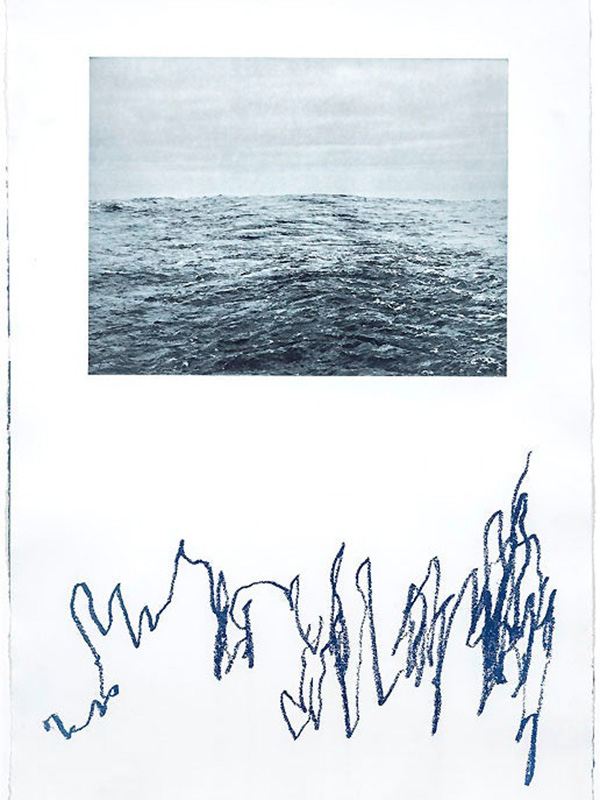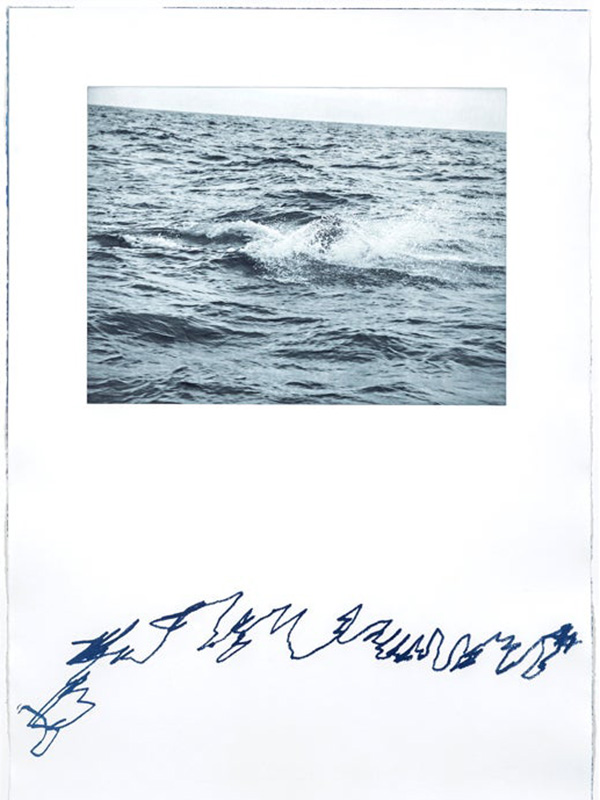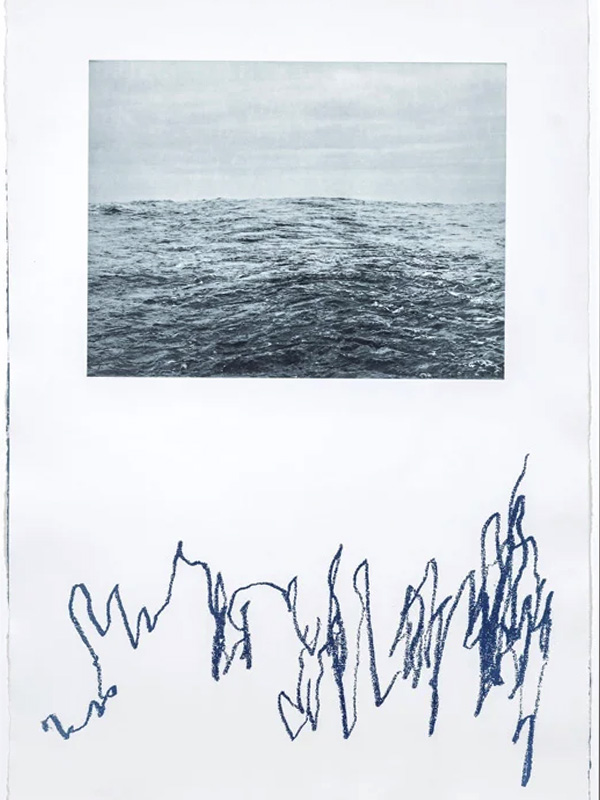In the exhibition ‘Epoch’ at Trykkeriet, Janne Kruse has worked with the reproduction of photographic material and her memory from a sailing trip across the Atlantic. She examines coincident spaces between the photographic image surface, the evocation of memory and the body as the registrar of both its own and the surroundings’ movements. The places of the journey are detached from their actual geography. Instead, the subject in the photographs acts as a memory parameter. What is a picture and how can we be part of a picture?
Janne Kruse (b. 1979 in Aarhus, Denmark) is a graduate of the Oslo Academy of the Arts and the Central Academy of Fine Art in Beijing. In recent years, she has exhibited at Kunstnerforbundet, Oslo; Eskilstuna Art Museum, Eskilstuna; Aiyo Space, Beijing; Kunsthal Charlottenborg, Copenhagen; Kunstnernes Hus, Oslo; Vigelandsmuseet, Oslo; Luda Gallery, St. Petersburg and Aarhus Kunsthall, Aarhus. Janne Kruse lives and works in Oslo.
You’re in a boat on the high seas. In a flash, the horizon appears as a cut. Under the infinite sky, over the infinite sea. The vertical cuts a cross section in the horizontal. So only the eye can see it. An eye-opener. Simple lines and empty surfaces intersects and draws and bends and leans against each other, when they do not take a break and rest only in themselves. When the storm comes, the lines bend out of shape, the walls fall into each other and the abyss opens up. The language waves.
If you place a light in the outer corner of the eye in just the right place, you light up the retina and can, if you are lucky, see your own eye from within a short second. It appears as a tree of blood vessels. The Purkinjes tree. This tree is located in front of the eye’s receptors. But since it does not move, it is invisible. What is stable in the eye, at rest, falls away. Lack of vision is not perceived as a black area, but as nothing. You can not see anything.
“Large rooms also have corners,” writes Janne Kruse in a letter.
We surround ourselves with corners and borders. Picture frames. That which is within and that which is outside.
An ancient text by Pliny, tells of a competition between the rival artists Apelles and Protogenes. The protogenes draws such a thin line that it could not possibly have been painted by a human hand or brush. But Apelles, with his brush, then divides his rival’s line in two with an even finer line, thus halving it lengthwise. This is how the dream of the Appeal cut arises.
What does it mean to divide a boundary lengthwise? To cut the cut? To delimit the border yourself? No cut is perfect, there is always a residue. World salt is divided into legal dichotomies, but it never quite goes up. The remnant that remains after the Appeal cut is the remnant of the remnants. The division of legality itself puts it out of play. The new division that arises is not part of a whole, but the impossibility of a part and a whole to ever take part in each other. Time has also been cut up in Appellate parts, and we only have leftovers to rummage through.
It is thought that seasickness occurs because the ear and eye are disconnected. Sensations are decoupled from their entirety. Down in the cabin, the body moves, it waves back and forth, but the forces are invisible. It does not work. Seasickness is a disease of division. The language breaks up there in the loneliness of the cabin.
Espen Sommer Eide 2016
